One of the marks of the XVIII century is the appearance of the so-called sentimental ring. This is an inexpensive ring which serves to identify its owner with a cause, emotion, or idea. The ring may show professional, political or religious affiliation. It could serve as a proof of the veracity of a claim, as a letter of introduction, maybe even a business card. We can imagine that in the days of the French Revolution a sentimental ring could disclose a royalist to another royalist.
Two such rings could be seen at the Musee of Carnavalet: the woman’s ring containing the hair of Marie-Antoinette, her hair is interwoven with the hair of her best friend, Princess de Lamballe; then a man’s ring. This man’s ring is in the shape of a coffin, and it has a name, ” Tears of Louis XVI.” This ring is also a reliquary for, just like the first one, it contains a few hair of the martyred monarch.
In the XVIII century hair is an elegant, portable relic that has put a new spin on the medieval bone versus flesh distinction: flesh is weak and worldly and bone is eternal and spiritual. The abundance of the royal hair is also perfectly mediaeval: in the Middle Ages we simply had too much of everything, too much bone, too much wood, too much cloth: everyone wanted a piece of action, and collectively they ended up with a forest of Golgotha crosses, enough bone to fill a oswery and cloth to dress an army. It is hard to see the royal family stocking their supporters with this kind of souvenirs for the years to come.
Let us take a closer look at the two hairpins made out of the clothes of Louis XVI. The sign says that the clothes were collected after the king’s execution. One thing we know from the eye-witness accounts, the king was not undressed. This is why the body exhumed by Louis XVIII is not that of Louis XVI. Even assuming that these are man’s clothes, and ignoring what all the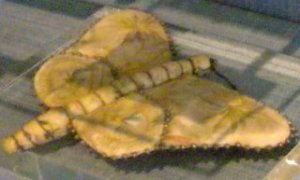 pictures show him wearing that day, what exactly are these, pants and a jacket? They don’t match, and unless the king was planning to run away and join the circus, I don’t see him wear the two together.
pictures show him wearing that day, what exactly are these, pants and a jacket? They don’t match, and unless the king was planning to run away and join the circus, I don’t see him wear the two together.
These are not the only items that make me wonder. The silverware. Louis XIV would not use a fork, but already Louis XV had no problem with it. Does it mean Louis XVI is a bit of a throw-back for his silverware set contains only a knife and a spoon.
Now razors. During his stay in the Tower the king shaves himself. But there is a principle of limit rigorously applied to his personal possessions. Given that this is a king i.e. the richest and the most powerful person in the country, it is precisely the parsimony that is responsible for the ambiance in this section of the museum. Then it breaks. Something is wrong with the picture.  Why are there two razors? One for each hand?
Why are there two razors? One for each hand?
Chess pieces. OK, they are sixteen of each color, but where are the knights? I see the king, I see the queen, I see two rooks, two bishops, all the rest are pawns? There are ten pawns on the board? Is this the chess set that the king was using in the Tower? Or are these some chess pieces mixed together whose provenance is unknown?
I understand that things were very different back then, but I also understand that all these are hot buttons which are supposed to bring tears in the eyes of the audience, and with tears in the eyes, our vision does get a bit blurry.

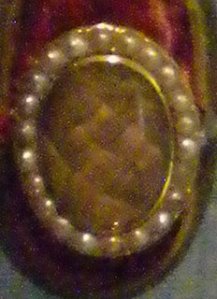
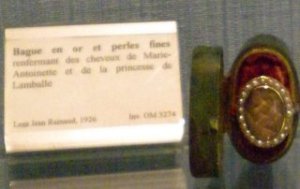
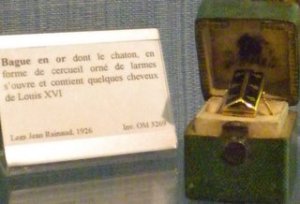
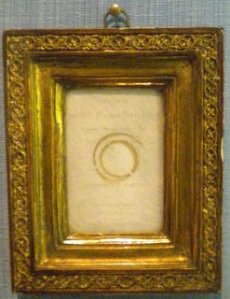
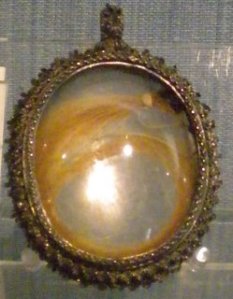
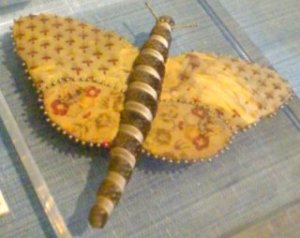


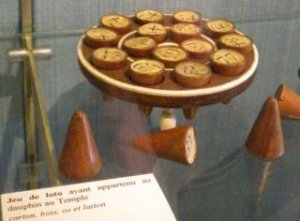
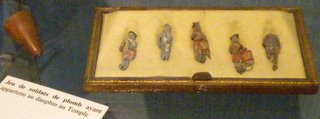
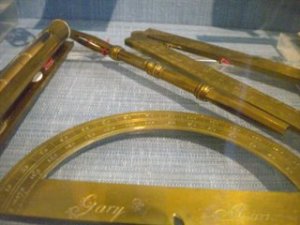



Why not post larger photos ? The point is to see the items.
Sorry, it’s all my fault, but I have figured these poor photos were better than nothing. What were some of my technical technical difficulties? It’s a fairly dark place, so the flash when it goes off reflects off the glass; there was no way to turn it off, not a very advanced model — fully automatic; so I would direct the camera not at the object but next to it, and then crop off the reflection; and finally the camera was broken! My son had dropped it, so the screen was shattered. What was the way I went about circumventing this? I would blindly take a dozen of pictures, then crop and straighten them out upon return home, all these photoshop-like manipulations have reduced the resolution.
The clothes used to make the butterfly may well have been collected, not from the body but from the prison. They may have been different waistcoats or coats among his remaining possessions. Just a thought.
The proliferation of those pieces raises the index of suspicion: when they are all assembled in the same room, you see that there is enough royal hair for a few wigs, and there is probably more in circulation; then I like to examine the provenance of what they show me: the description of those pins leaves little room for interpretation, clothes collected by nuns after the execution at the place of execution — a piece of cloth smeared with the blood of the martyred king — details are important; otherwise it wouldn’t carry the weight of a relic. In the end, genuine or fake matters little to me, I find both equally fascinating: a fake relic is still a relic; what vouches for its authenticity is how it functioned, and how it found its way into a private collection. Denon’s small “museum” is a good example; it’s his small theater of valuables and of values.